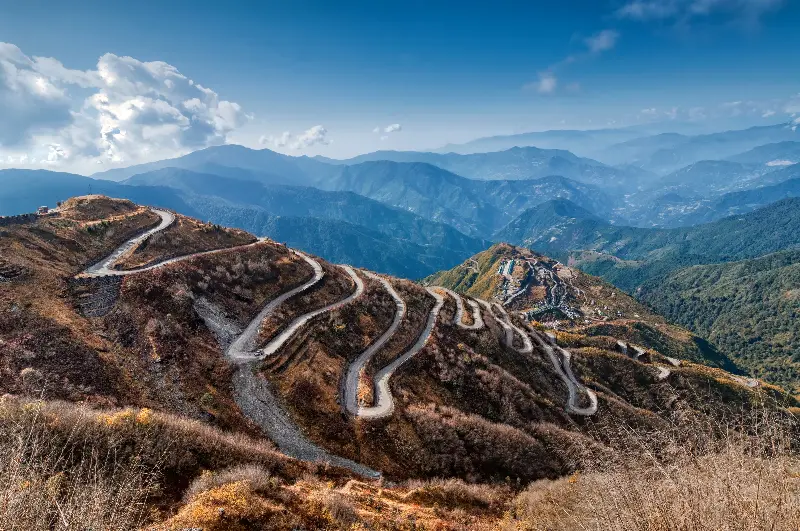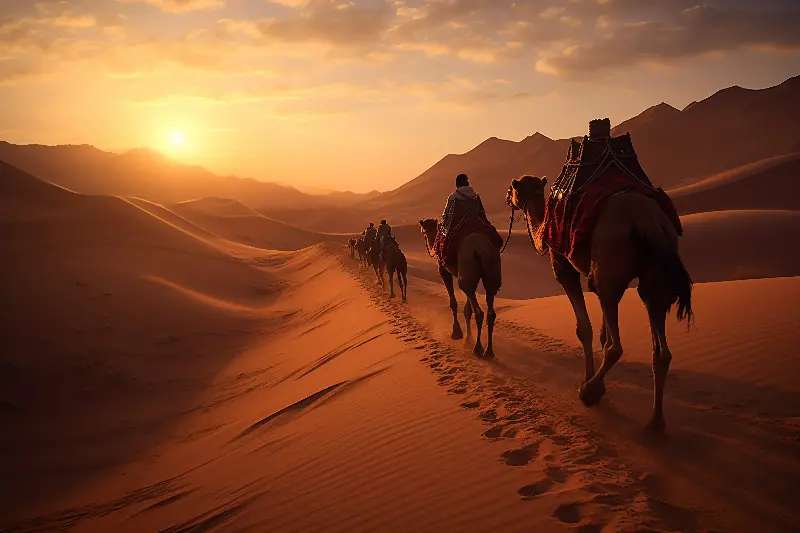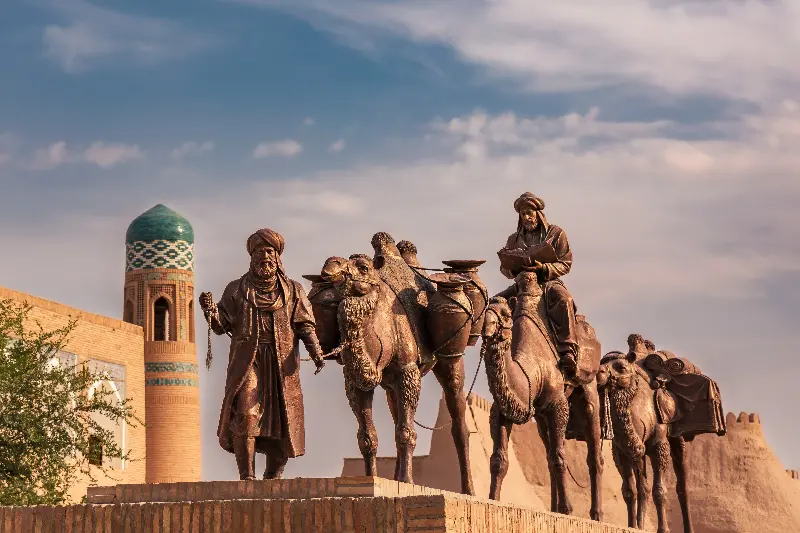For centuries, the Silk Road conjured images of grand caravans winding through sandy deserts, the jingle of camel bells, and bustling bazaars where East met West. Yet beyond the woven silks and traded spices, the Silk Road was a living artery pulsing with stories of adventure, discovery, and cultural fusion. Tracing the mysteries along these ancient trade routes reveals not only how commerce shaped empires but also how ideas, art, and legend travelled across civilisations, leaving vibrant imprints that endure today.
Origins And Paths Of The Silk Road
The Silk Road was not one route but a complex network of overland and maritime pathways, stretching more than 6,000 kilometres from the ancient capital of Chang’an (modern Xi’an) in China, through the daunting Taklamakan and Gobi deserts, all the way to the Mediterranean. Established formally during the Han dynasty around the 2nd century BCE, the routes flourished for over a millennium, connecting dynasties, sultanates, and kingdoms.
Caravans journeyed through heart-stopping terrain—from the snow-capped Pamirs, known locally as ‘the roof of the world’, to the shimmering sands of the Kyzylkum. Along the way, waystations like Samarkand, Bukhara, and Kashgar grew into cosmopolitan hubs, where Persian poets, Arab merchants, and Mongol horsemen mingled. These crossroads became melting pots, brewing a unique blend of languages, rituals, and art that shaped modern Eurasian societies.

The Epic Journeys Of Silk Road Merchants
Merchants along the Silk Road were more than traders juggling bales of silk or sacks of spice—they were daring adventurers and sometimes even vital diplomatic envoys. Chinese envoy Zhang Qian, sent westward around 138 BCE by Emperor Wu, is one of history’s earliest Silk Road explorers. While searching for allies against fierce nomads, Zhang brought back tales of faraway lands, previously unknown plants, and new trading partners. His epic adventures laid the groundwork for China’s opening to the West.
Travel along these vast distances was a feat of endurance. Bands of merchants braved sandstorms, bandits, and parched landscapes while tending to their loyal camels. These ‘ships of the desert’ could travel up to 40 kilometres a day and carried up to 200 kilograms of goods each. Despite waterless stretches like the feared Lop Desert, evidence of ancient wells and caravanserais reveals an organised structure welcoming weary travellers in even the harshest environments.
Some of the goods that passed along the Silk Road were pure luxury—Chinese silk, prized in Rome as ‘soft as zephyrs’; peppercorns and cinnamon from India; lapis lazuli gems from Bactria; and Venetian glass from Europe. Yet there was also wool, paper, gold, wine, and even exotic animals such as lions and ostriches making their way between continents.

Spread Of Ideas, Art, And Religion
What perhaps mattered even more than silks or spices was the flow of culture. Buddhist monks trudged from India through Central Asia into China, spreading teachings that gave rise to monumental cave temples like those at Dunhuang and Bamiyan. Artistic motifs, from Greco-Roman columns to Persian floral designs, mingled in architecture and sculpture, visible in hidden grottoes and oasis palaces.
The Silk Road also became a superhighway for knowledge. Papermaking techniques travelled west from China, revolutionising communication in Baghdad and, centuries later, across Europe. Medical herbs, astronomical observations, and mathematical concepts crossed borders, often carried in the memory and manuscripts of wandering scholars.
Stories and fables, too, rode the caravan trails. Classic tales like “The Thousand and One Nights” drew on folklore heard in Samarkand or Damascus. The story of the lost city of Niya, swallowed by the sands of the Tarim Basin, became legend among the merchants who skirted its haunted ruins. Such tales, flavoured by the geography and fears of the Silk Road, shaped the imagination of future generations long after the routes fell silent.

Lost Empires And Legendary Treasures
Some of the greatest mysteries of the Silk Road remain the rise and fall of empires built on its riches. Cities like Merv once rivalled Baghdad and Constantinople in splendour, home to grand libraries and towering palaces, only to vanish beneath desert dust after invasions, earthquakes, or the shifting sands of time.
The search for lost treasures persists. In the early 20th century, explorers like Aurel Stein uncovered secret libraries hidden in cave sanctuaries at Dunhuang, discovering Buddhist scrolls sealed away a thousand years before. Archaeologists continue to unearth murals, coins, and even mummified remains, tracing the enigmatic footprints of those who braved the edges of the known world.
Not all mysteries are material. Legends tell of a fabled Roman legion lost in the east, said to have settled in a remote Chinese valley, or a river of mercury marking the tomb of China’s First Emperor. While the truth may remain elusive, the allure of possibility keeps the Silk Road alive in the minds of adventurers and dreamers.
From the golden textiles of Byzantium to the incense-laden caravans of Arabia, the Silk Road was more than a trade route—it was a crossroads of humanity. Its mysteries remind us that every journey is shaped as much by myth as by history, and that sometimes, the most valuable treasures are not of gold or silk, but of shared stories, whispered across the ages, waiting to be unravelled anew.
